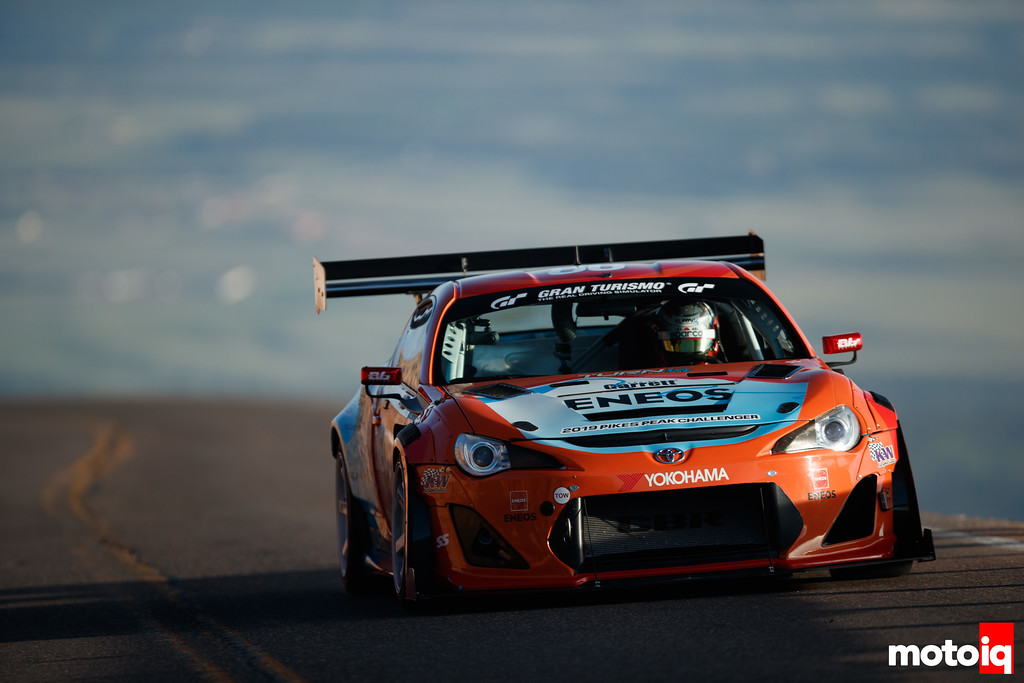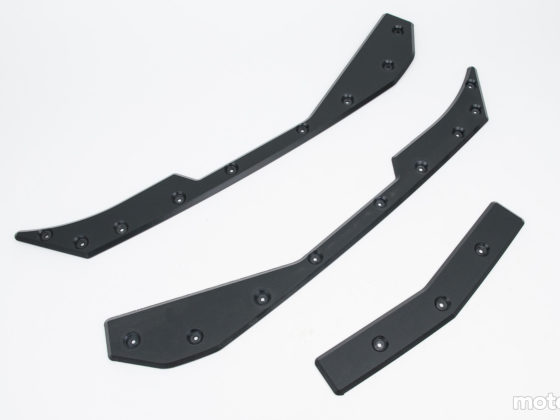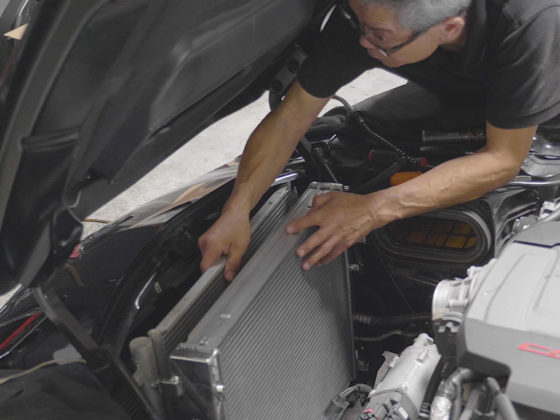
The next day was pretty easy, we had to pick up our credentials from the hotel that was serving as race headquarters and take the car for tech inspection.

The car was unloaded and the aero assembled. When designing aero it really helps if you designed all the stuff to come on and off quickly because you end up doing it several times a day to fit in the trailer even on a good day!

At tech, the car was gone over with a fine-tooth comb. Pike Peak is an inherently dangerous event and the officials take extra care to make sure each car is safe.

Every weld on the cage is inspected.

Every bit of the car’s layout falls under the watchful eyes of the tech officials.

We passed with flying colors. The Evasive Team is very thorough in prep and studying the rulebook beforehand so there were no issues. So for the rest of the day, we relaxed because the next day would be a long one.

So we had to get up at 2am so we could be up the Mountain and staged up to run our practice session by 4:30 or so. The cars leave the line at first light and have to be off the Mountain by 9am so the tourists are not inconvenienced too badly.




7 comments
Really cool article Mike, it made me think of a few questions though.
Does the aero noticeably get weaker as the car climbs? if so, would having driver/automatic tuneable suspension make a difference?
The car seem to have small endplates, are those rules limited as well? I would think gigantic endplates would be the default for a course like Pikes Peak.
About the turbo, does it spool up quicker and reach higher RPM in thinner air? So you would get better response but less overall power the higher you go? Unless it’s not limited by the friction on the compressor wheel…
Anyways TIL about racing with oxygen bottles on Pikes Peak.
The aero gets weaker as the car climbs higher, also the turns get tighter and for the most part lower speed. Having driver-adjustable suspension is not that useful because the driver is pretty busy on this course because very little of it is straight and if your chassis guy knows what he is doing the car is balanced high and low-speed aero load or not. A big endplate doesn’t mean much. It gives more room for sponsor logos. The end plates main job is to prevent spillover on the ends of the wing elements or front diffuser for that matter. The ones on our front diffuser also serve as vortex generators so they can only be around a certain size. That is what the weird looking shape is for. At high altitudes, compressor Overspeed and surge are for sure a thing and sometimes you have to reduce boost as the car climbs. Watching that situation is something that is a headache that kicks a lot of people’s ass.
Oh, I thought endplates had a big effect on yaw control, like the shark fins on WEC cars, but if they have a big effect on the budget aren’t they even more useful!? hahaha.
Good to know about boost control at altitude, I just realized that pikes peak is even higher than the Andros Trophy in the french alps. The mexico GP is only half that and they have trouble.
The shark fins don’t do anything in CFD and wind tunnel, at least when they were first tested. They did give more advertising space.
Mike! Do you have any kind of fan setup behind the radiator? Or do you get enough air flow from how fast the car is going up the track?
Yes a pretty large fan, I think its a Spal.
Great article, I love the prep perspective to go with the technical articles.
It seems like you were prepping at Pikes Peak for about a week?